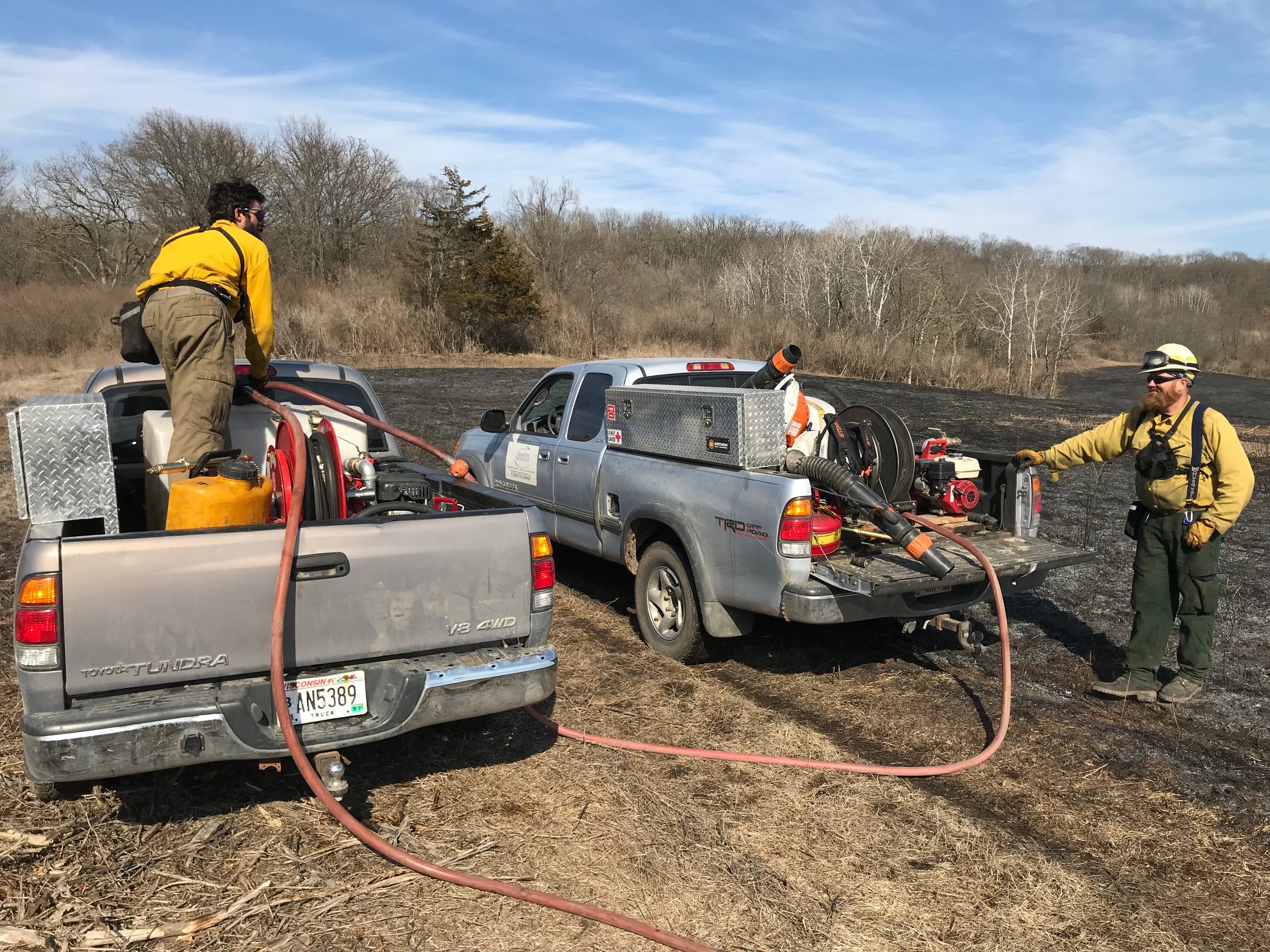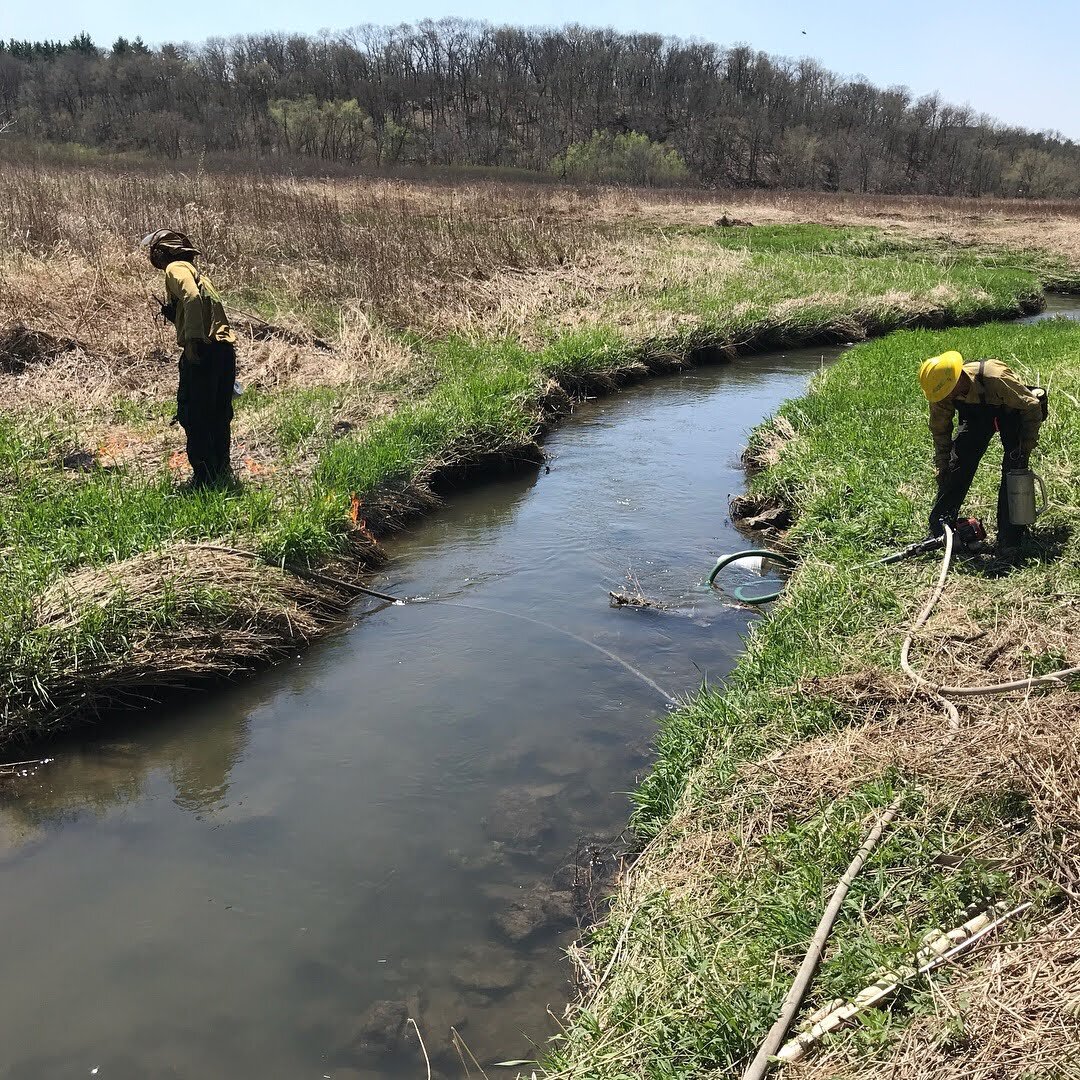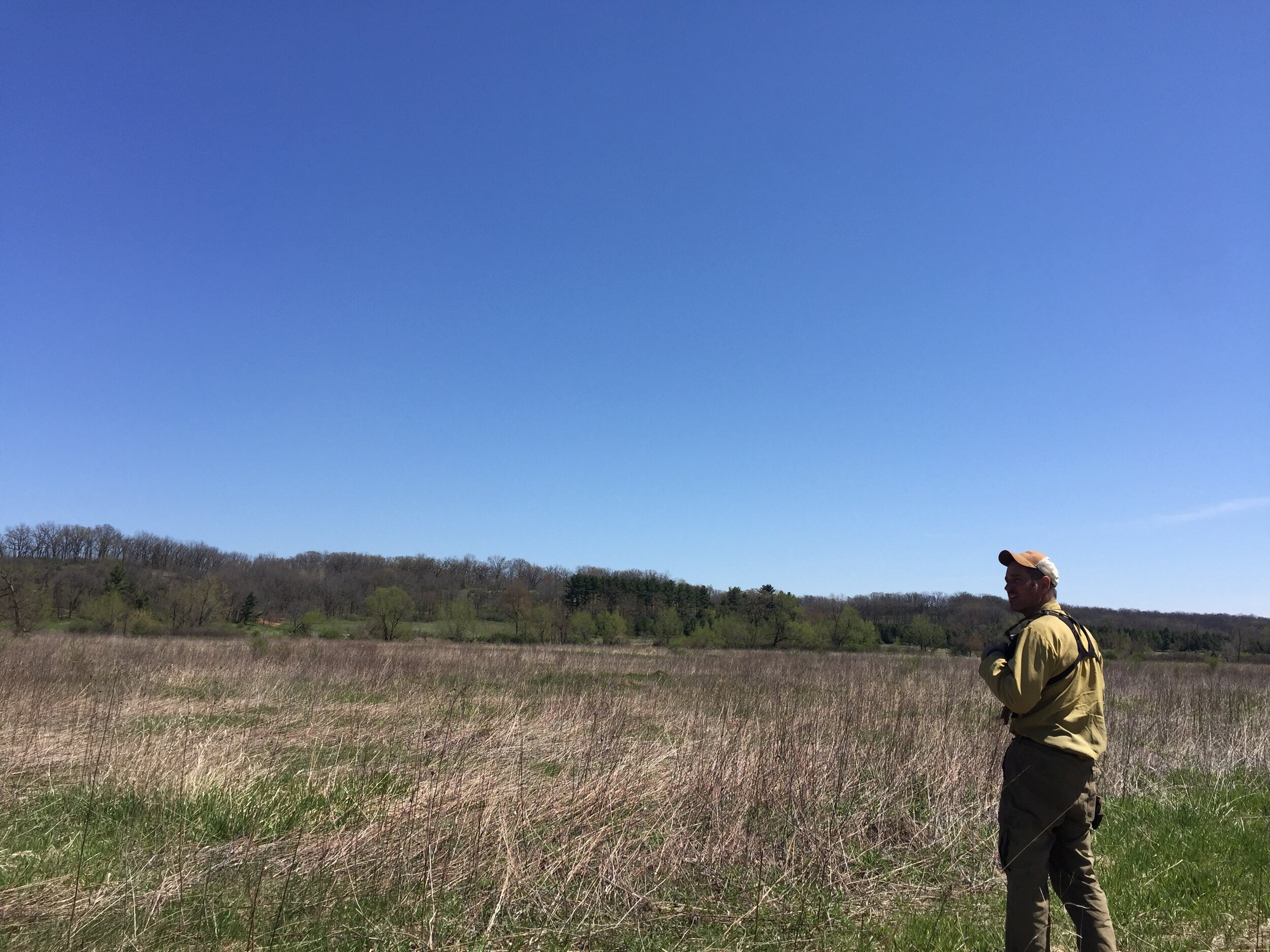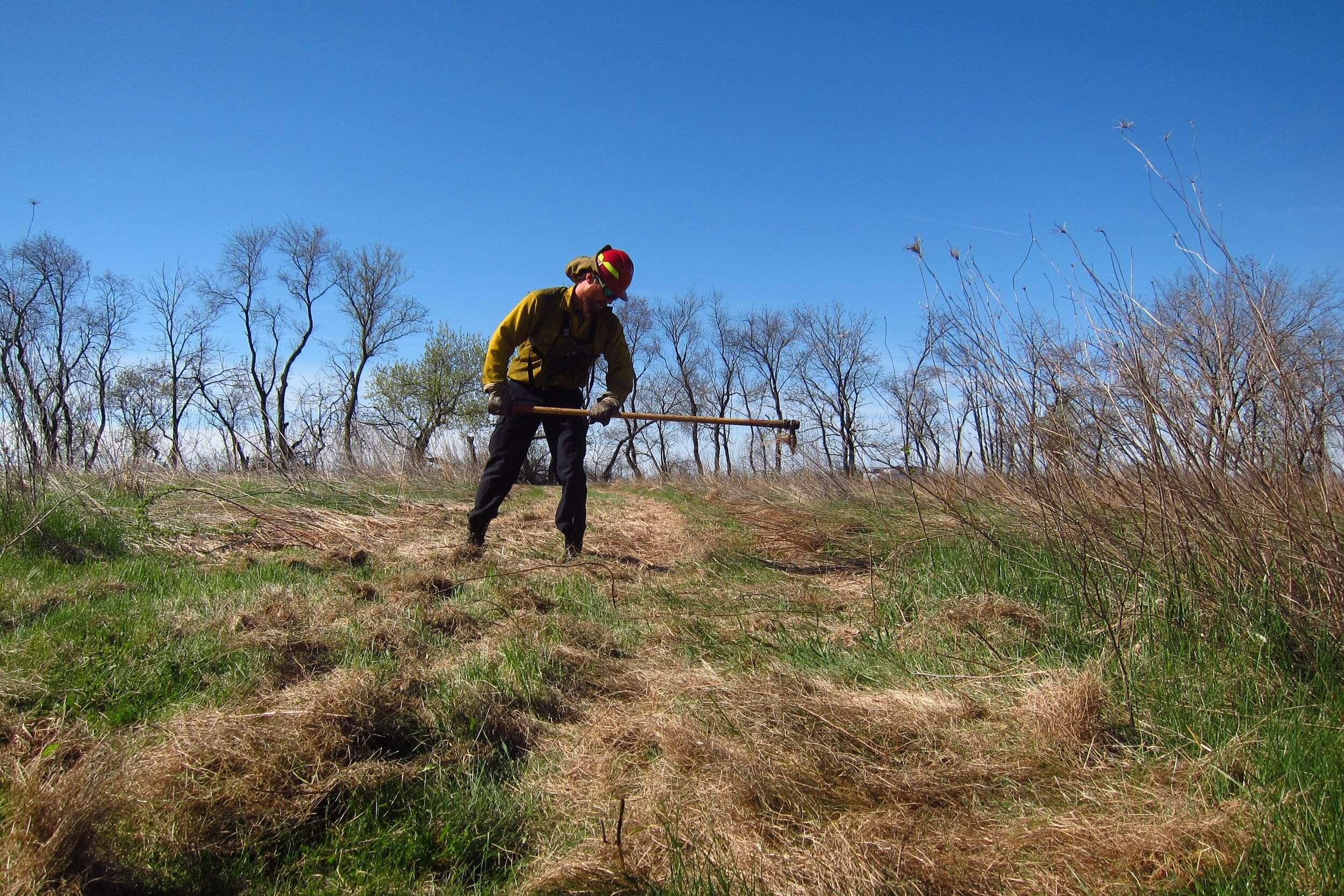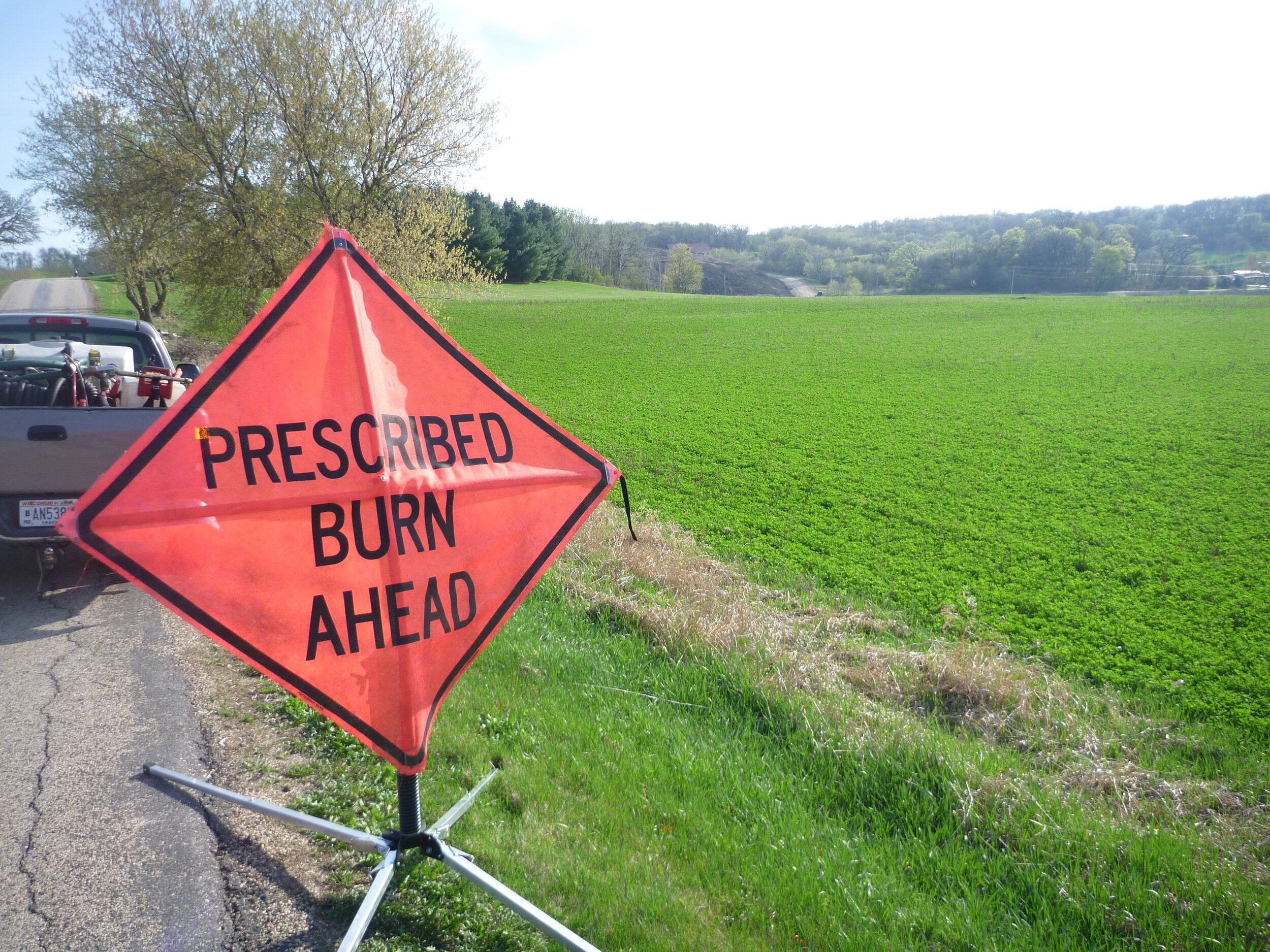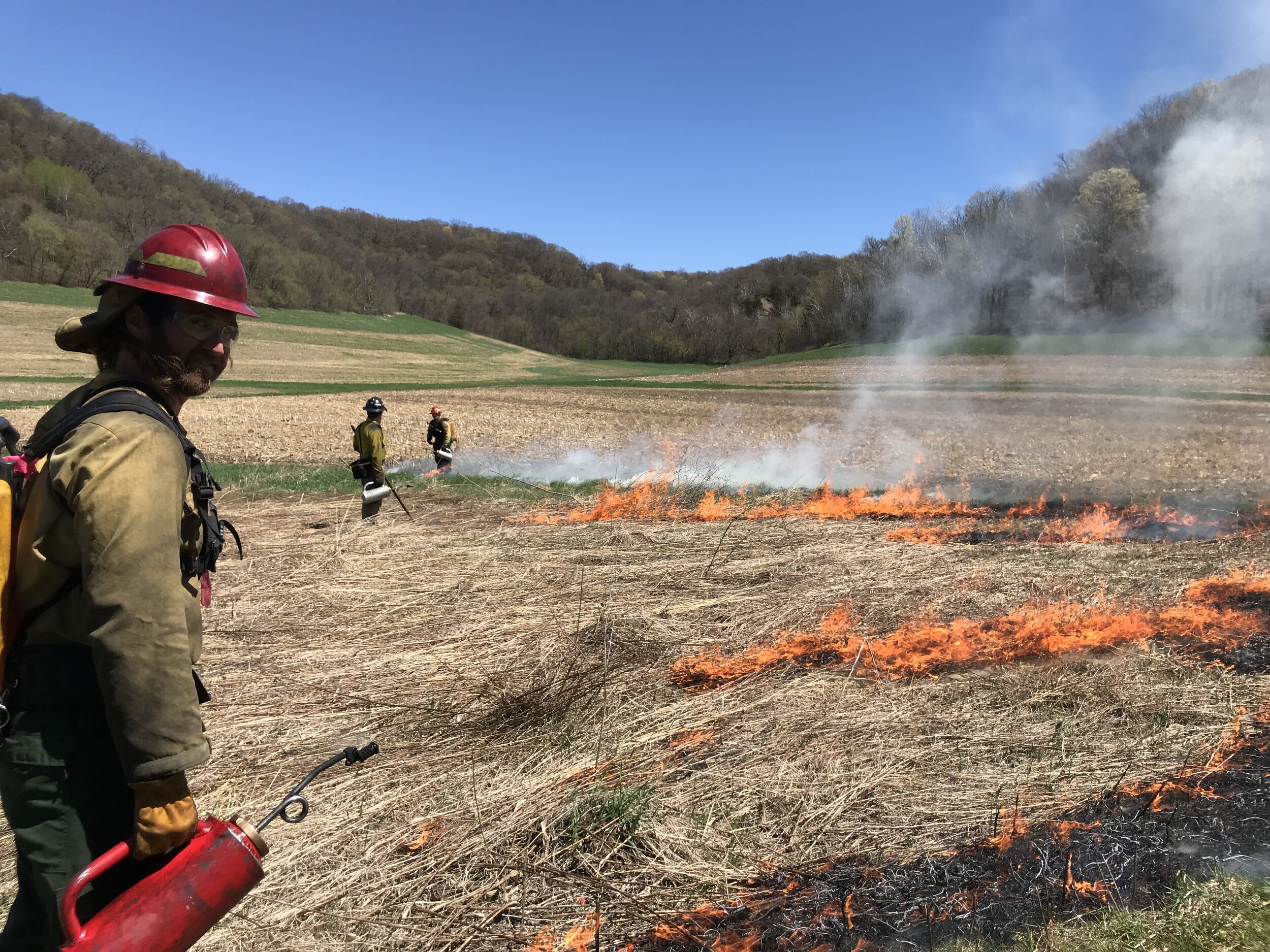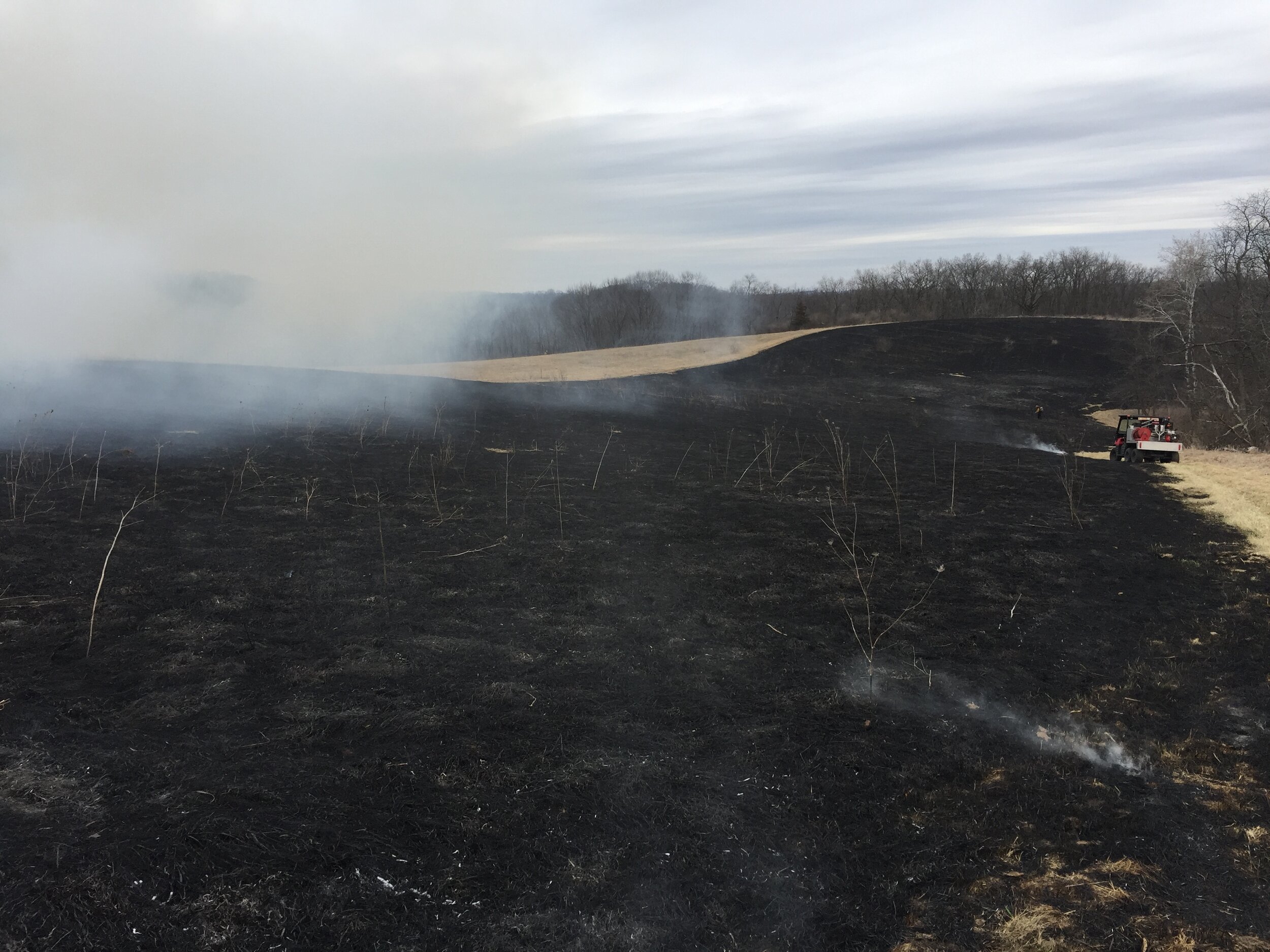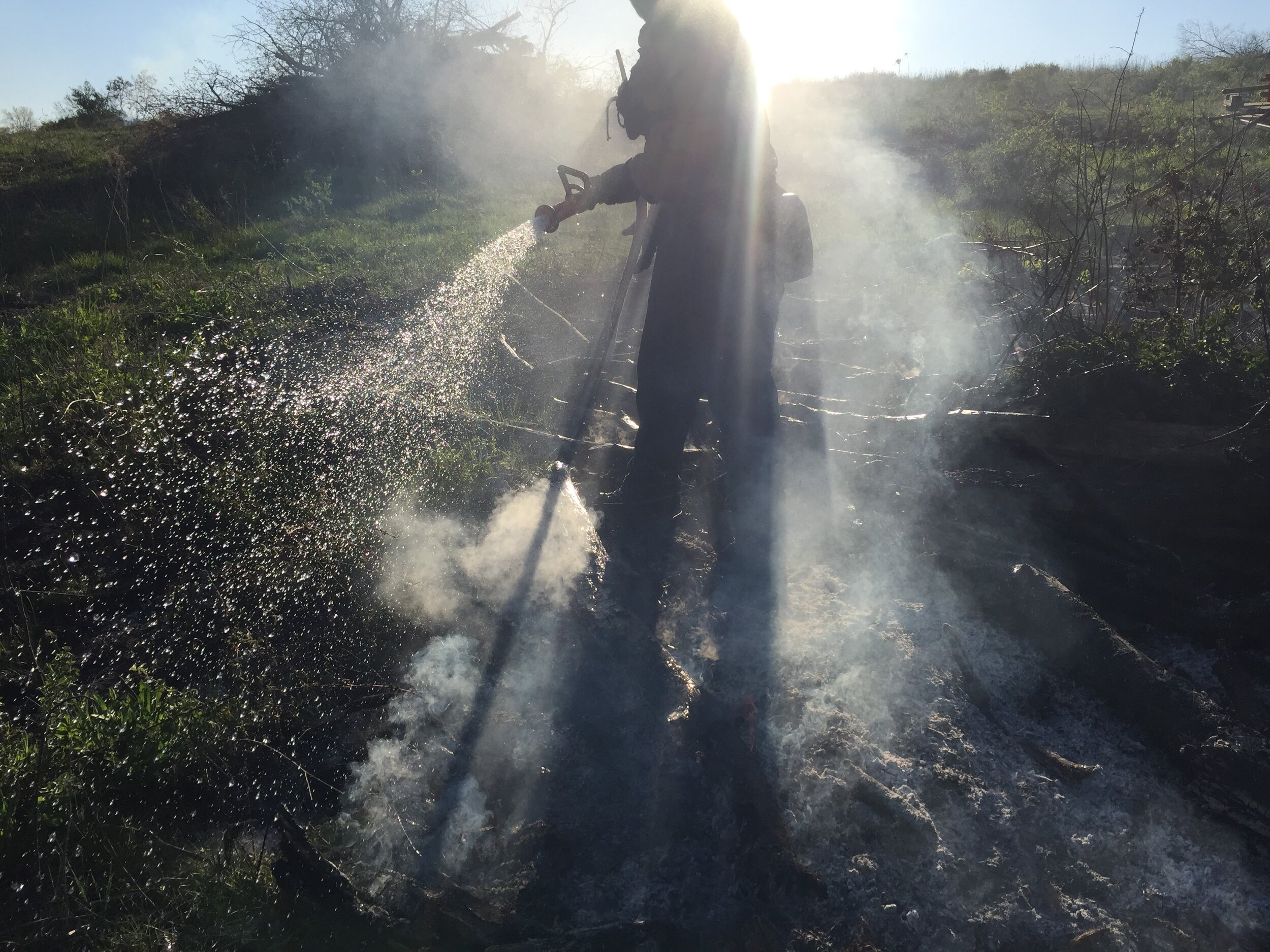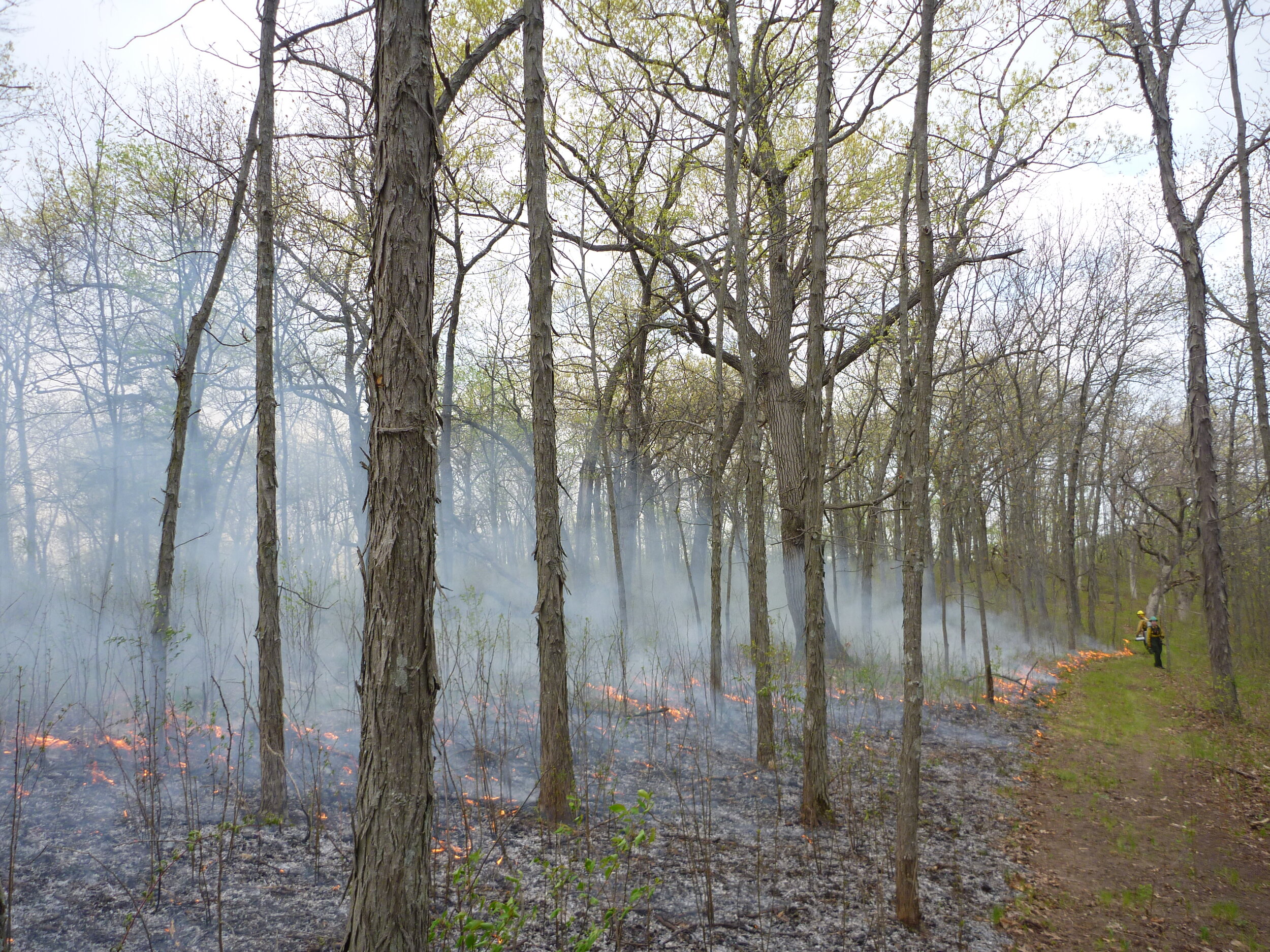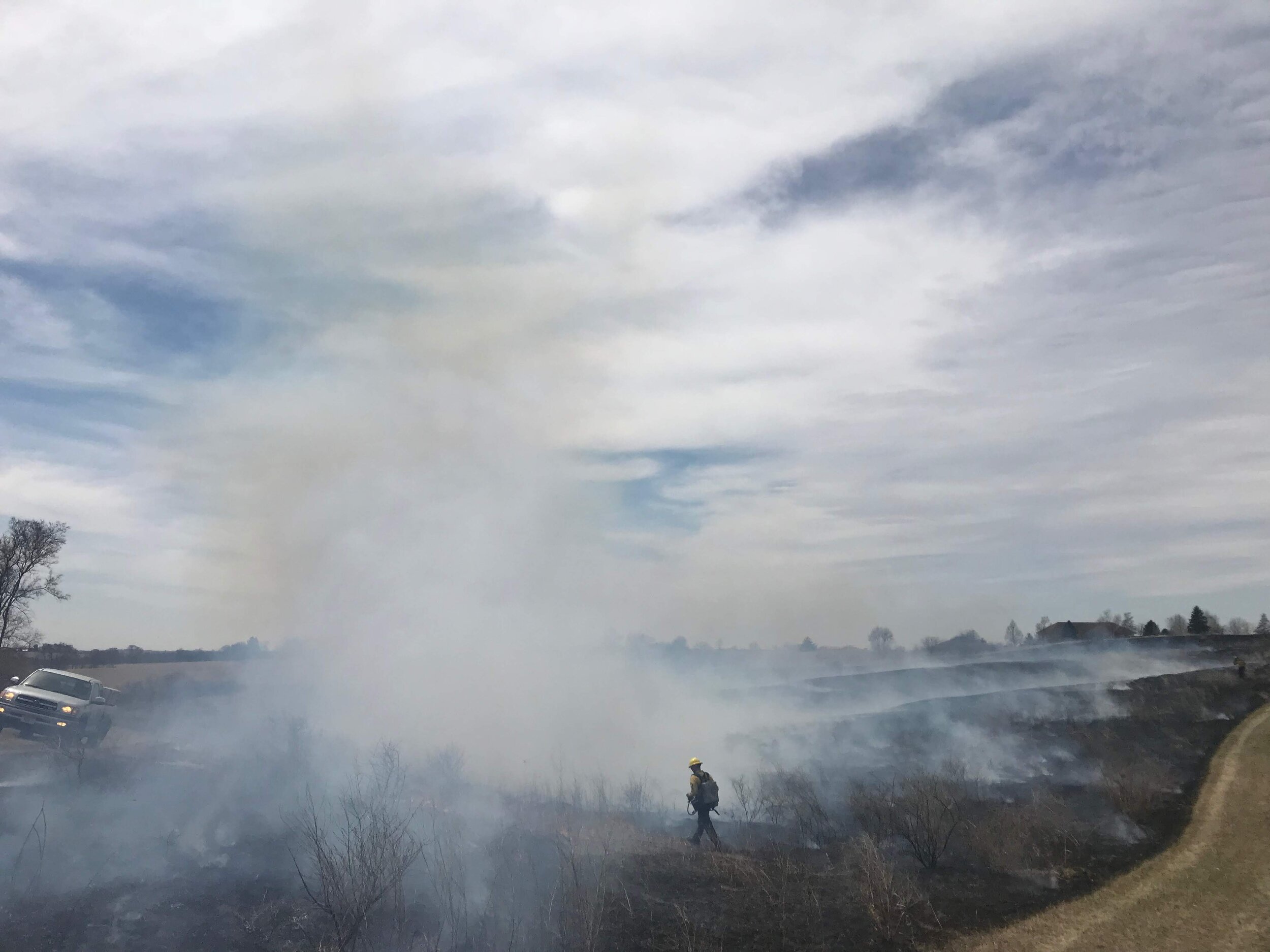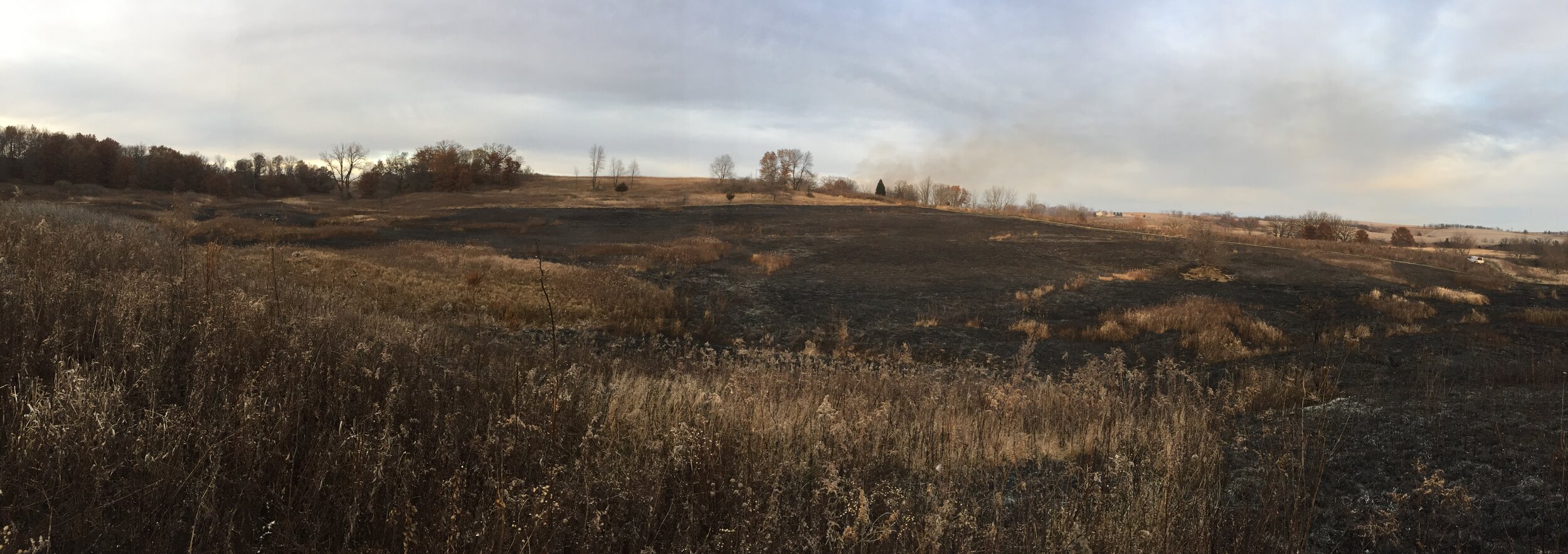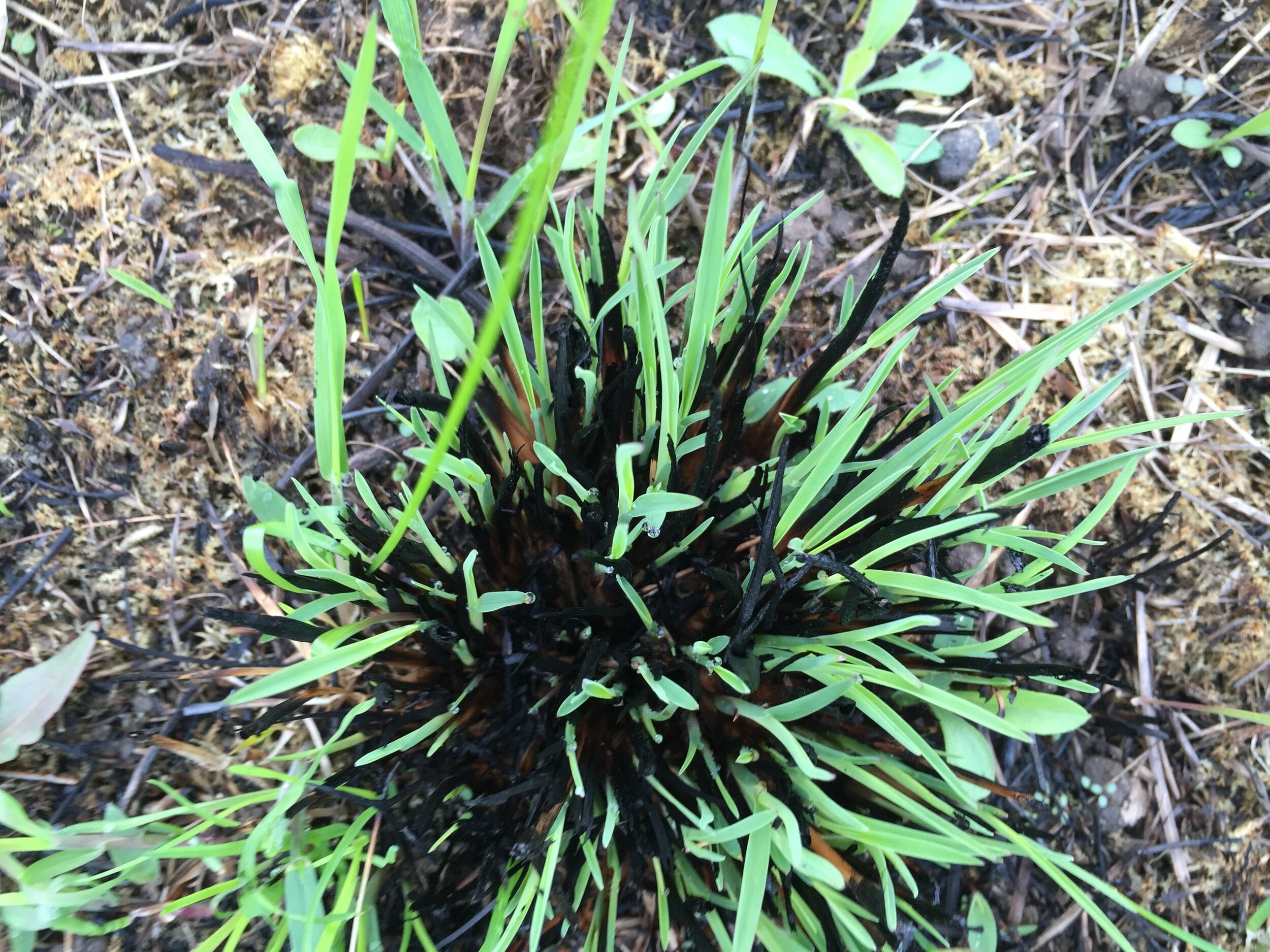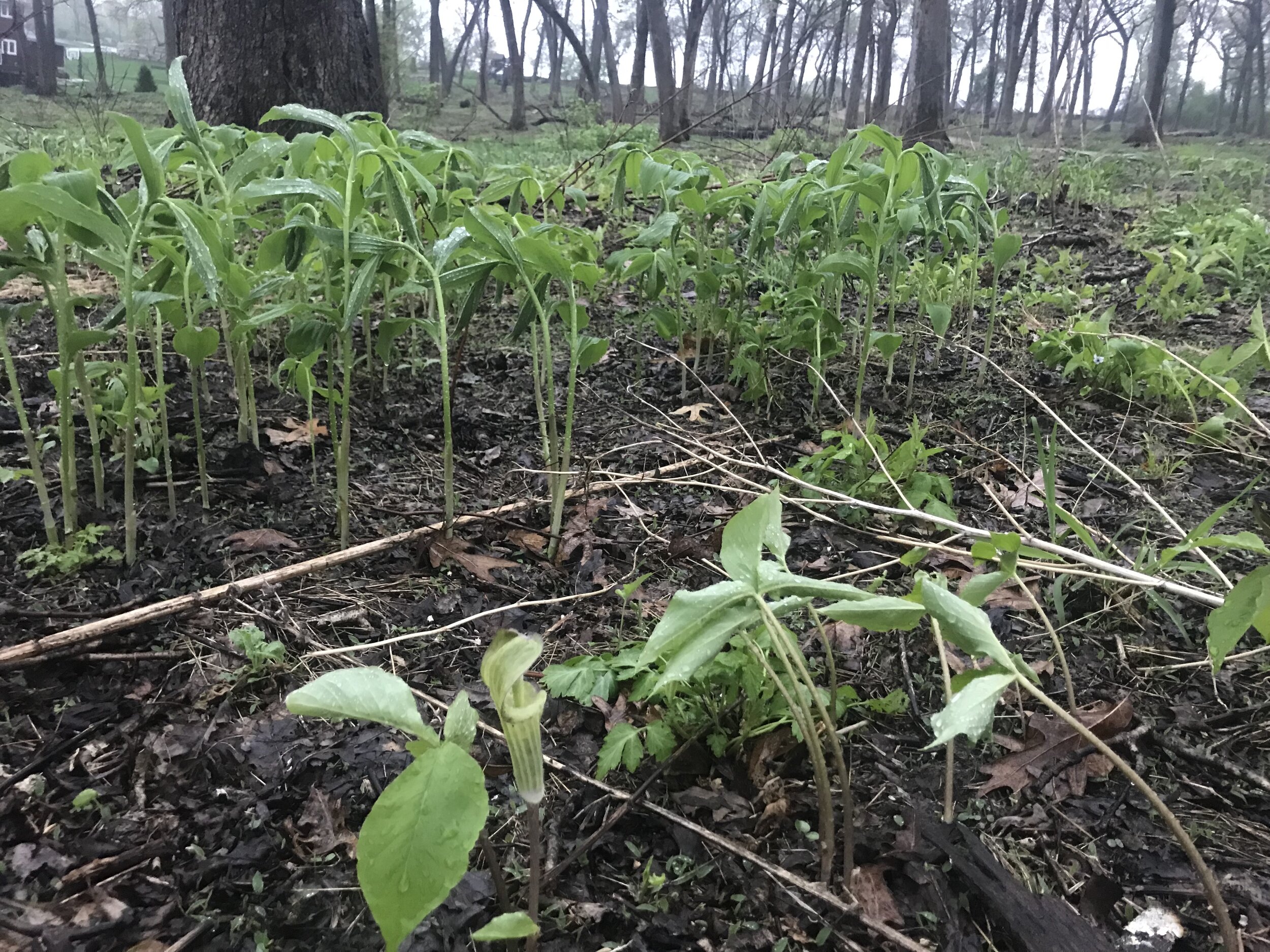What does a prescribed burn look like?
How will the unit look after the burn?
Immediately after the burn
The majority of fuels will be consumed by fire, giving the unit a blackened appearance. Each burn has a unique ecological objective, and therefore some burns will have more or less consumed fuels. We generally aim for 50-95% consumption of fine fuels (grass, twigs). Remaining vegetation or litter may serve as habitat for insects, birds and small mammals. These “patchy” or “mosaic” burns may also serve to promote biodiversity. Variation in burn frequency and intensity across a site creates a variety of conditions for different species to thrive.
Weeks and months following a burn
One of the most exciting aspects of burning is observing the emergence of new plant material from blackened ground in the weeks and months following a burn. You may notice different plant composition, robustness and height between burned and unburned areas. During tree and brush leaf-out, you may also notice evidence of top kill, or kill of the aboveground portion of a woody species, such as invasive honeysuckle. Tree species resilient to fire include Wisconsin’s native oaks, particularly bur oak.
For more information about prescribed burning in southern Wisconsin, visit




